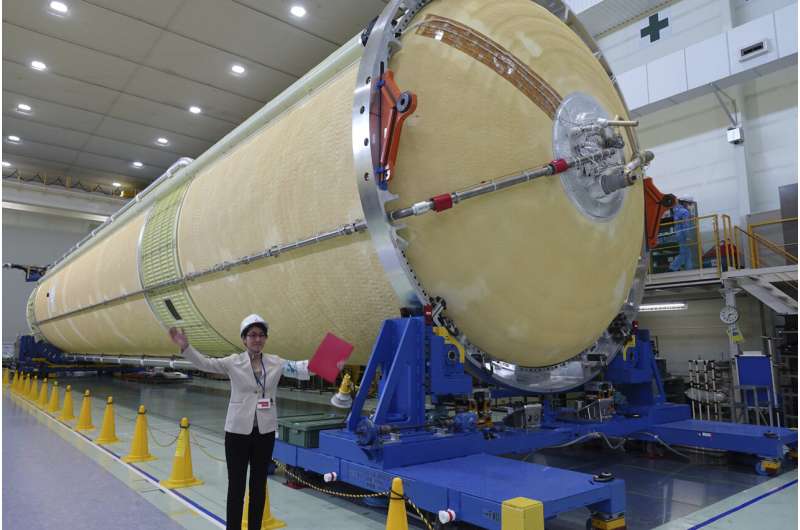Mayuki Niitsu, MHI's H3 rocket project manager, said it plans at least six launches a year to meet rapidly growing demand for communication, observation and security satellites.
"Today, the commercial market has a big demand for rockets, and there is a substantial shortage of rockets," he said, standing next the rocket's second stage at a news conference. "Space X is virtually dominating the market right now, but I believe there are high expectations of our role as an alternative."
An H3 rocket successfully reached orbit and released two small observation satellites on Feb. 17 following a failed debut launch last year in which the second-stage engine did not ignite.
Mitsubishi Heavy will eventually take over H3 production and launches from JAXA and hopes to make it commercially viable.

The H3 rocket's first and second stages were shown to the media before their planned shipment later this week to the Tanegashima Space Center in southwestern Japan for final assembly with the main engines and a fairing. When combined, the rocket will be 57 meters (187 feet) long.
The H3 is designed to carry larger payloads than the H-2A at about half its launch cost, or about 50 billion yen ($330 million), to be globally competitive.
That, however, is still considered expensive, and MHI officials say they hope to achieve better price competitiveness after about a dozen launches.
Niitsu said there are other ways to be competitive, for example by providing flexible launch schedules and being better at meeting clients' needs.
In January, a H-2A rocket successfully placed a spy satellite into orbit, and days later JAXA's unmanned spacecraft SLIM made the world's first "pinpoint" moon landing.
© 2024 The Associated Press. All rights reserved. This material may not be published, broadcast, rewritten or redistributed without permission.



